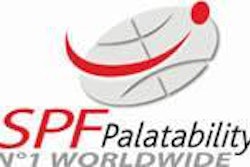
While the U.S. poultry processing sector continues to be focused on improving its efficiency and quality of its products, water consumption has also become a priority due to its direct impact on sustainability. Additionally, immersion chilling is one of the highest areas of water consumption in the processing sector and is the predominant chilling method used in the U.S.
In a discussion comparing air and immersion chilling, BAADER Poultry USA CEO Oliver Hahn, Marel Inc. regional sales director Jay Russel and SEE North America executive director of bags and case-ready product marketing Shawn Harris gave perspective on where the U.S. processing sector is headed at the 2024 Chicken Marketing Summit.
Air or immersion chilling?
Even though air chilling typically requires a larger investment for the producer and more square footage in the processing plant, it offers a significant savings on water and energy usage.
According to Hahn, air chilling will improve the U.S. processing sector’s water consumption and the industry will most likely move to air chilling as a whole in the next 10 years.
“The technology is there and has been for a long time,” he said.
According to Russel, air chilling provides advantages, outside of reduced water consumption, such as flavor enhancement, due to the lack of water competing with flavor, and can lead to improvements in cooking attributes such as crispier skin. Additionally, shelf life is improved with air chilling due to the lack of additional moisture, Russel said.
The U.S. is the only market that still uses immersion chilling, outside of parts of Brazil, added Russel. In Europe, poultry processors are required to use air chill. Immersion chilling is outlawed due to concerns about the bacterial load in the water.
Additionally, air chilling allows for more transparency because flock lots can stay organized due to birds never being removed from the shackles, which is advantageous to the producer and consumer.
According to Harris, water consumption is one of the largest hurdles the U.S. processing sector will need to overcome in the next 15-20 years, making air chilling an attractive option. This is because of reduced water access in some areas of the U.S.
“Areas in the western U.S. are geographically difficult to transport the amount of water needed for immersion chilling to,” Harris said. Also, Harris said, immersion chilling is the most efficient of the two options due to the quick heat transfer that water allows.
Both options offer advantages
All three experts agreed immersion and air chilling offer advantages to poultry producers.
“There will be a place for both chilling processes, it just depends how the producer wants to market its product,” Harris said.
Hahn added: “Opportunities to save water in processing are there. From the point of the consumer, consumers want less water usage. The tipping point is once the plants can no longer use well water, that will be when air chill outperforms from an economic point of view.”
It is the industry’s responsibility to consider what’s best for the producer, consumer and environment, added Russel.
“It come down to what the producer wants to get out of the process,” he said.
Attend the 2025 Chicken Marketing Summit
The 2025 Chicken Marketing Summit will be held at the DeSoto Savannah in Savannah, Georgia, on July 28-30, 2025.
Serving a unique cross-section of the chicken supply chain, the Chicken Marketing Summit explores issues and trends in food marketing and consumer chicken consumption patterns and purchasing behavior.
Registration will open in early 2025.
For more information, visit: www.wattglobalmedia.com/chickenmarketingsummit/

















